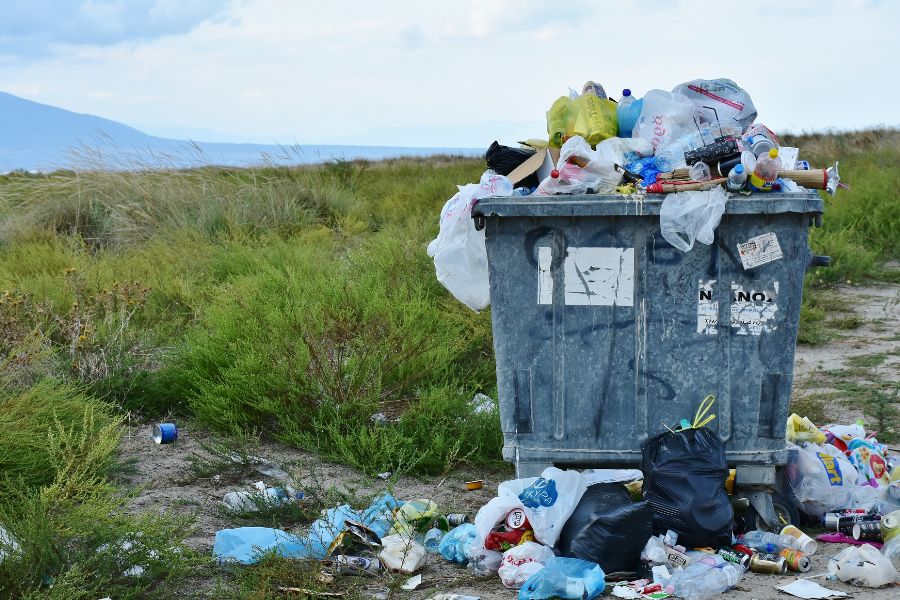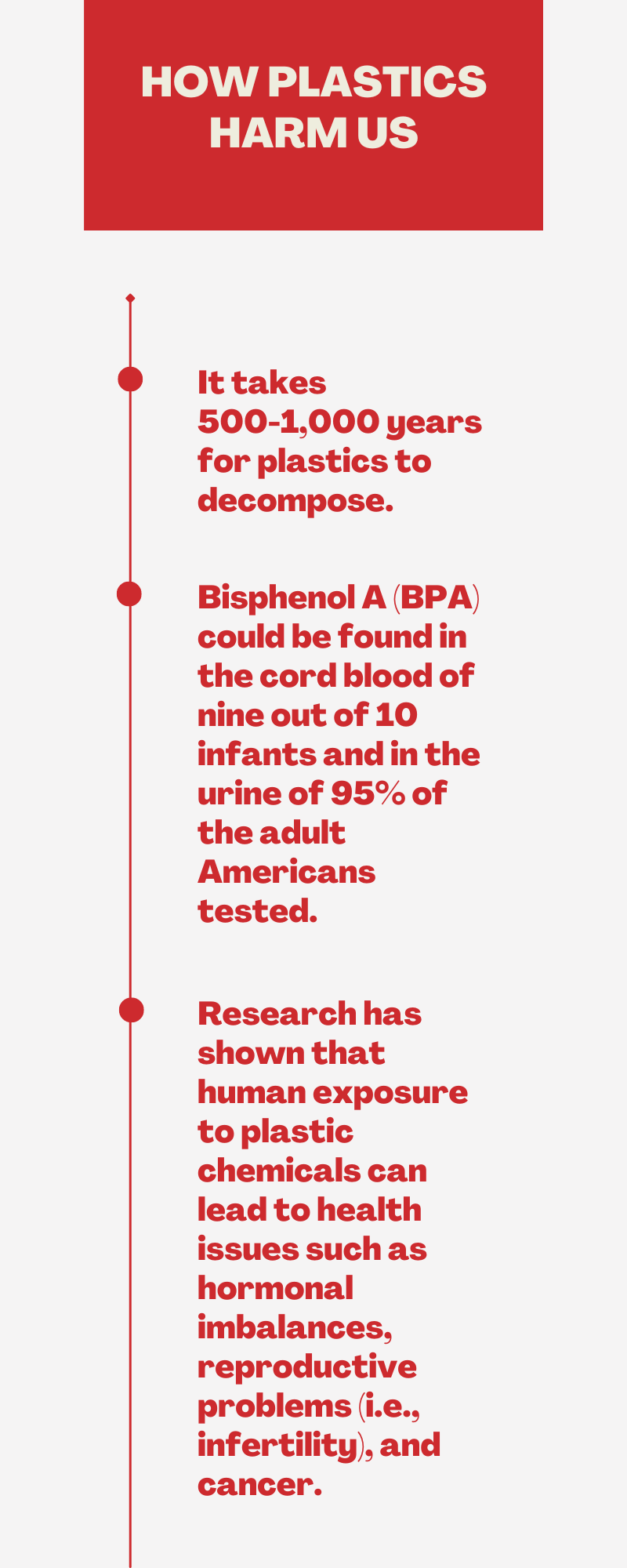Plastic permeates all aspects of life. Because plastic is everywhere, plastic pollution is also everywhere. In the past decades, single-use plastics (SUPs) became disproportionately predominant in pollution worldwide (Cho, 2018).
SUPs are plastic items used only once, or for a short period of time, before being thrown away. They are primarily made from fossil fuel-based chemicals (petrochemicals) and are meant to be disposed right after use (sometimes in minutes). SUPs have a smaller environmental footprint when compared to reusable plastics. Many items considered SUPs are actually able to be reused, or recycled, giving them a second life. SUPS are commonly used for packaging. This category includes plastic bags, straws, dry cleaning bags, water bottles, wrappers, take-out food containers, and coffee cups (Cho, 2018; Lindwall, 2020).
Why SUPS are bad for the environment and human bodies
SUPs pollution accumulates in land, especially on farms, where sewage sludge is used for fertilizer (Cho, 2018). Plastic waste is also most visible on streets and water. That is, litter is usually the first step in a waste stream that enters waterways as plastics tossed on the street, which are washed away by rain or travel via storm drains into rivers, streams, and oceans (Lindwall, 2020). The majority of SUPs waste comes from countries lacking infrastructure to properly manage waste (i.e., Asia and African countries). A significant number of SUPs produced in Asian countries is for products that serve countries from different continents (i.e., European countries and the United States). Additionally, some of these country consumers send the plastic waste back to the countries that produced these SUPs for recycling purposes (i.e., the United States sends SUPs back to China) (Lindwall, 2020). China in recent years, however, has reduced the amount of recyclable waste that it imports.
It takes around 500-1,000 years for plastics to decompose. However, biodegradable water containers can break down in six weeks (Vuleta, 2022). Plastics can kill numerous animals before they finally disintegrate, and could have countless casualties throughout this life span. Once the plastic is swallowed by a creature, it will be re-introduced in the environment after the dead animal's body decomposes, and the process continues in this cycle harming more wildlife for hundreds of years (Vuleta, 2022).
SUPs also enforce the throwaway culture. Environmental activists believe that instead of investing in quality packaging that will last, society prioritize convenience and practicability over durability and consideration of long-term impacts. Using SUPs implies that in society, accumulating waste at a staggering rate is something natural and acceptable (Lindwall, 2020).
Left alone, plastics do not break down, although they break up. Over time, sun and heat slowly turn plastics into smaller and smaller pieces until they become “microplastics.” These microplastics (around 5 millimeters long) are hard to detect, but they are everywhere. They usually end up in the water, eaten by wildlife (which are dangerous for animals’ bodies, as it can cause health issues – i.e., punctured organs and intestinal blockages), and inside our bodies (Lindwall, 2020).
Bisphenol A (BPA), a chemical component in the plastic of some water bottles could be found in the cord blood of nine out of 10 infants and in the urine of 95% of the adult Americans tested. Tiny bits of microplastic and plastic fibers (smaller than the width of a human hair) have been found in honey, sugar, beer, processed foods, shellfish, salt, bottled water and tap water. Microplastics even contaminate Arctic ice (Cho, 2018). Further, exposure to microplastics, and chemicals that are added to plastics, harms human bodies. For instance, many of the chemicals in plastics are known to be endocrine disruptors. Research has shown that human exposure to plastic chemicals can lead to health issues such as hormonal imbalances, reproductive problems, infertility, and cancer. Based on studies by the U.S. Environmental Protection Agency (EPA), the phthalate DEHP added to plastics (i.e., shower curtains, garden hoses) to make them more flexible is just one example of the many components of plastics that are carcinogenic, and therefore, harmful for humans as well (Lindwall, 2020).
According to scientists, most of our sewage treatment plants do not have the capacity to filter out these micron-sized particles of plastic because they get through the filtration system. Plastic are vectors for transport of organic elements such as drugs and pesticides in the wastewater that ends up in sewage treatment plants. When marine species eat them, if affects the whole food chain (Cho, 2018).



